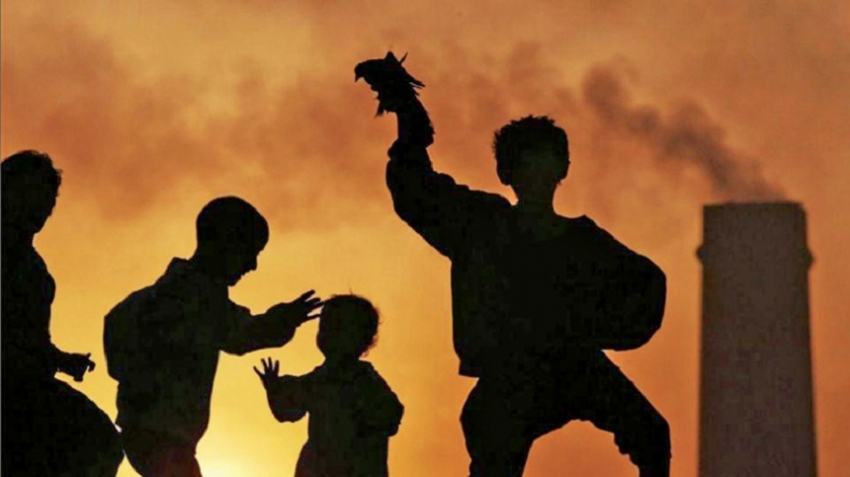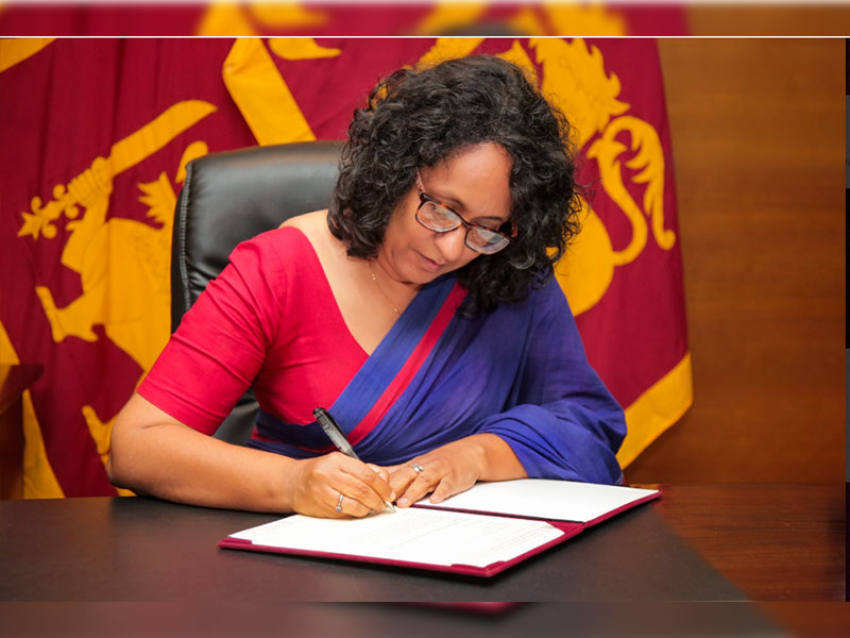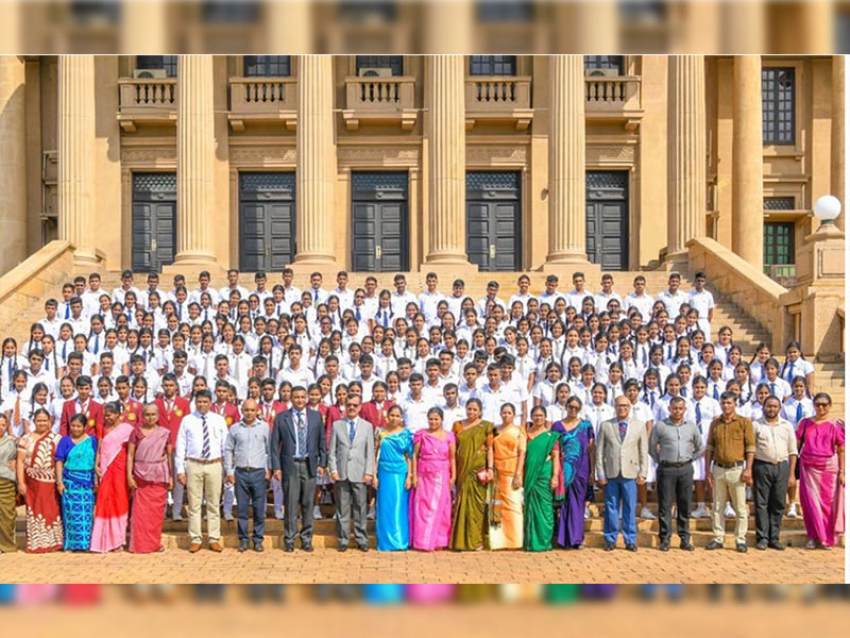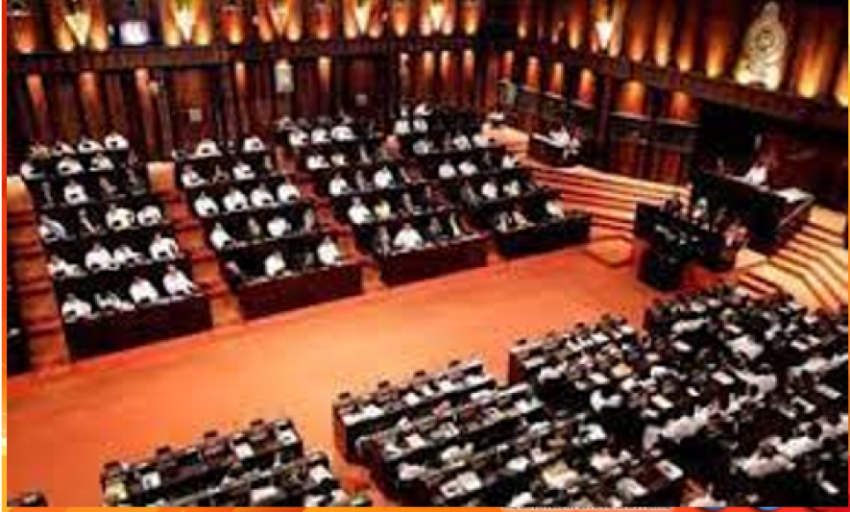Every day around 93 percent of the world’s children under the age of 15 (1.8 billion children) breathe air that is so polluted; it puts their health and development at serious risk. Tragically, many of them die: The World Health Organization (WHO) estimates that in 2016, 600,000 children died from acute lower respiratory infections caused by polluted air. A new WHO report on ‘Air Pollution and Child Health: Prescribing Clean Air’ examines the heavy toll of both ambient (outside) and household air pollution on the health of the world’s children, particularly in low- and middle-income countries. The report was launched on the eve of WHO’s first-ever Global Conference on Air Pollution and Health.
It reveals that when pregnant women are exposed to polluted air, they are more likely to give birth prematurely, and have small, low birth-weight children. Air pollution also affects neurodevelopment and cognitive ability and can trigger asthma, and childhood cancer. Children who have been exposed to high levels of air pollution may be at greater risk for chronic diseases such as cardiovascular disease later in life. “Polluted air is poisoning millions of children and ruining their lives,” says WHO Director-General Dr. Tedros Adhanom Ghebreyesus. “This is inexcusable. Every child should be able to breathe clean air so they can grow and fulfil their full potential.”
One reason why children are particularly vulnerable to the effects of air pollution is that they breathe more rapidly than adults, and so absorb more pollutants.They also live closer to the ground, where some pollutants reach peak concentrations – at a time when their brains and bodies are still developing.Newborns and young children are also more susceptible to household air pollution in homes that regularly use polluting fuels and technologies for cooking, heating and lighting.
“Air pollution is stunting our children’s brains, affecting their health in more ways than we suspected. But there are many straightforward ways to reduce emissions of dangerous pollutants,” says Dr. Maria Neira, Director, Department of Public Health, Environmental and Social Determinants of Health at the WHO. “The WHO is supporting the implementation of health-wise policy measures such as accelerating the switch to clean cooking and heating fuels and technologies, promoting the use of cleaner transport, energy-efficient housing and urban planning. We are preparing the ground for low-emission power generation, cleaner, safer industrial technologies and better municipal waste management,” she added.
Key findings:
* Air pollution affects neurodevelopment, leading to lower cognitive test outcomes, negatively affecting mental and motor development.
* Air pollution is damaging children’s lung function, even at lower levels of exposures.
* Globally, 93 percent of the world’s children under 15 years of age are exposed to ambient fine particulate matter (PM2.5) levels above WHO air quality guidelines, which include the 630 million of children under five years of age, and 1.8 billion of children under 15 years.
* In low- and middle-income countries around the world, 98 percent of all children under five are exposed to PM2.5 levels above WHO air quality guidelines. In comparison, in high-income countries, 52 percent of children under five are exposed to levels above WHO air quality guidelines.
* More than 40 percent of the world’s population – which includes one billion children under 15 - is exposed to high levels of household air pollution from mainly cooking with polluting technologies and fuels.
* About 600,000 deaths in children under 15 years of age were attributed to the joint effects of ambient and household air pollution in 2016.
* Together, household air pollution from cooking and ambient (outside) air pollution cause more than 50 percent of acute lower respiratory infections in children under five years of age in low- and middle-income countries.
* Air pollution is one of the leading threats to child health, accounting for almost one in 10 deaths in children under five years of age.
The WHO’s First Global Conference on Air Pollution and Health, which was held in Geneva on October 30 provided the opportunity for world leaders; ministers of health, energy, and environment; mayors; heads of intergovernmental organizations; scientists and others to commit to act against this serious health threat, which shortens the lives of around seven million people each year.
Actions should include:
* Action by the health sector to inform, educate, provide resources for health professionals, and engage in inter-sectoral policymaking.
* Implementation of policies to reduce air pollution: All countries should work towards meeting the WHO global air quality guidelines to enhance the health and safety of children.
To achieve this, governments should adopt such measures as reducing the over-dependence on fossil fuels in the global energy mix, investing in improvements in energy efficiency and facilitating the uptake of renewable energy sources. Better waste management can reduce the amount of waste that is burned within communities and thereby reducing ‘community air pollution’. The exclusive use of clean technologies and fuels for household cooking, heating and lighting activities can drastically improve the air quality within homes and in the surrounding community.
* Steps to minimize children’s exposure to polluted air: Schools and playgrounds should be located away from major sources of air pollution such as busy roads, factories and power plants.
Summary of WHO report
This report summarizes the latest scientific knowledge on the links between exposure to air pollution and adverse health effects in children. It is intended to inform and motivate individual and collective action by health care professionals to prevent damage to children’s health from exposure to air
pollution. Air pollution is a major environmental health threat. Exposure to fine particles in both the ambient environment and in the household causes about seven million premature deaths each year. Ambient air pollution (AAP) alone imposes enormous costs on the global economy, amounting to more than US$ five trillion in total welfare losses in 2013.This public health crisis is receiving more attention, but one critical aspect is often overlooked: how air pollution affects children in uniquely damaging ways. Recent data released by the WHO show that air pollution has a vast and terrible impact on child health and survival.Globally, 93 percent of all children live in environments with air pollution levels above the WHO guidelines. More than one in every four deaths of children under five years is directly or indirectly related to environmental risks. Both AAP and household air pollution (HAP) contribute to respiratory tract infections that resulted in 543,000 deaths in children under five years in 2016.
Although air pollution is a global problem, the burden of disease attributable to particulate matter in the air is heaviest in low- and middle-income countries (LMICs), particularly in the WHO African, South-East Asia, Eastern Mediterranean and Western Pacific regions.LMICs in these regions – especially the African Region – have the highest levels of exposure to HAP due to the widespread use of polluting fuels and technologies for basic daily needs, such as cooking, heating and lighting. Poverty is correlated with high exposure to environmental health risks. Poverty can also compound the damaging health effects of air pollution, by limiting access to information, treatment and other health care resources.
Children are society’s future. But they are also its most vulnerable members. The immense threat posed to their health by air pollution demands that health professionals respond with focused, urgent action. Although more rigorous research into how air pollution affects children’s health will continue to be valuable, there is already ample evidence to justify strong, swift action to prevent the damage it clearly produces. Health professionals must come together to address this threat as a priority, through collective, coordinated efforts. For the millions of children exposed to polluted air every day, there is little time to waste and so much to be gained.
(Source: World Health Organization)
-





















